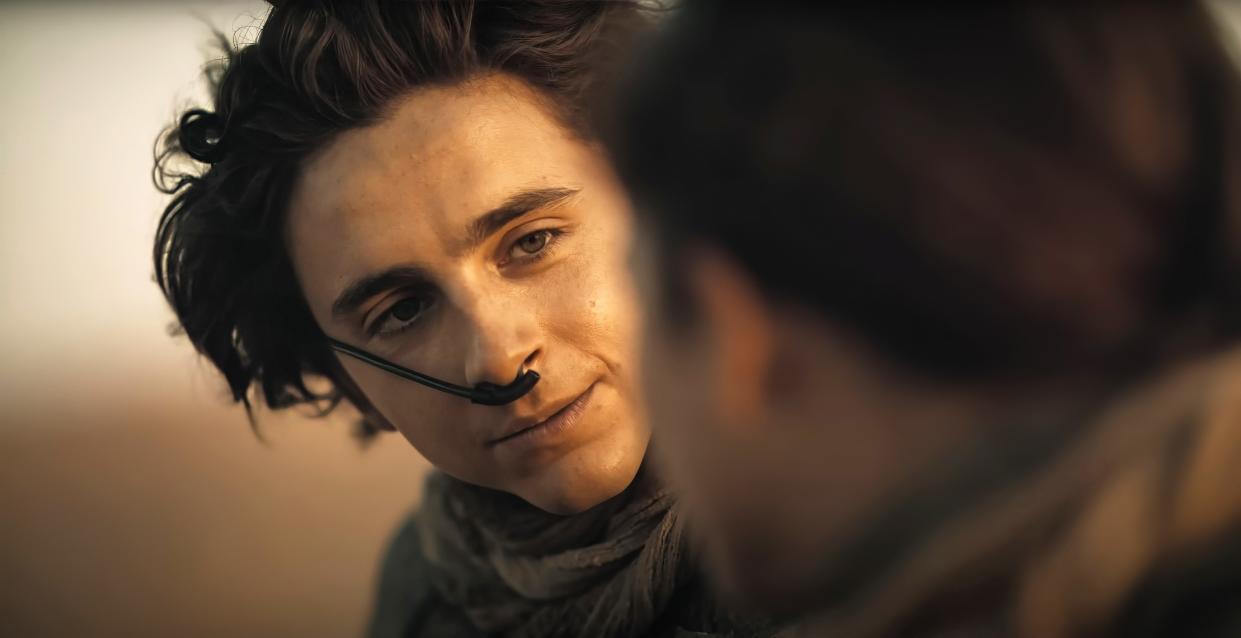Steven Spielberg Calls ‘Dune: Part Two’ Sandworm Scene ‘One of the Greatest Things I’ve Ever Seen’

Steven Spielberg can’t stop thinking about Timothée Chalamet atop a sandworm in Denis Villeneuve’s “Dune: Part Two.”
The director praised Villeneuve during an installment of the DGA’s “Director’s Cut” podcast, where Spielberg welcomed Villeneuve to the club of filmmakers who are the “builders of worlds” onscreen.
More from IndieWire
“It’s an honor for me to sit here and talk to you. Let me start by saying there are filmmakers who are the builders of worlds. It’s not a long list and we know who a lot of them are,” Spielberg said. “Starting with [Georges] Méliès and Disney and Kubrick, George Lucas. Ray Harryhausen, I include in that list. [Frederico] Fellini built his own worlds. Tim Burton. Obviously Wes Anderson, Peter Jackson, James Cameron, Christopher Nolan, Ridley Scott, Guillermo del Toro. The list goes on but it’s not that long of a list, and I deeply, fervently believe that you are one of its newest members.”
Why was Spielberg so particularly compelled to anoint Villeneuve into this sacred club? Well, it turns out Villeneuve’s vision for the sequence where hero Paul (Chalamet) rides a sandworm propelled his filmography over the threshold, per Spielberg.
“This is a desert-loving story, but for such a desert-loving film there is such a yearning for water in this movie. For all the sand you have in this film, it’s really about water. The sacred waters that are yearning for green meadows and the blue water of life. You film the desert to resemble an ocean, a sea,” Spielberg said. “The sandworms were like sea serpents. And that scene surfing the sandworms is one of the greatest things I have ever seen. Ever! But you made the desert look like a liquid.”
Villeneuve previously told IndieWire’s Anne Thompson that the sandworm scene was “not easy” to shoot.
“Everything that we shot in the deep desert was not easy because I wanted a level of realism that required us to create giant structures or shadow makers in order to make the light believable,” Villeneuve said. “The characters and all the action sequences required a tremendous amount of prep, and logistics to protect the crew from the heat and to protect the stunts. The one scene that I didn’t want to compromise at all was the worm ride. It technically required a lot of time and research and development. That was by far one of the most complex things I’ve ever done.”
Production built 18 miles of eco-friendly roads in the Jordan desert to transport film gear and build basecamps. Villeneuve credited Oscar-winning cinematographer Greig Fraser for selecting which sand dunes to capture in the futuristic sci-fi space-set film.
“You are surrounded by thousands of sand dunes. And why are you choosing that specific one that is two miles in the desert? It’s all about the shape, and it had to match Greig’s specification for light,” Villeneuve said. “It’s like a puzzle to find the right location even in the ocean of sand dunes. Nature is specific, and it took us a while to find all the right locations.”
Best of IndieWire
The Best LGBTQ Movies and TV Shows Streaming on Netflix Right Now
Guillermo del Toro's Favorite Movies: 54 Films the Director Wants You to See
Nicolas Winding Refn's Favorite Films: 37 Movies the Director Wants You to See
Sign up for Indiewire's Newsletter. For the latest news, follow us on Facebook, Twitter, and Instagram.

 Yahoo News
Yahoo News 
